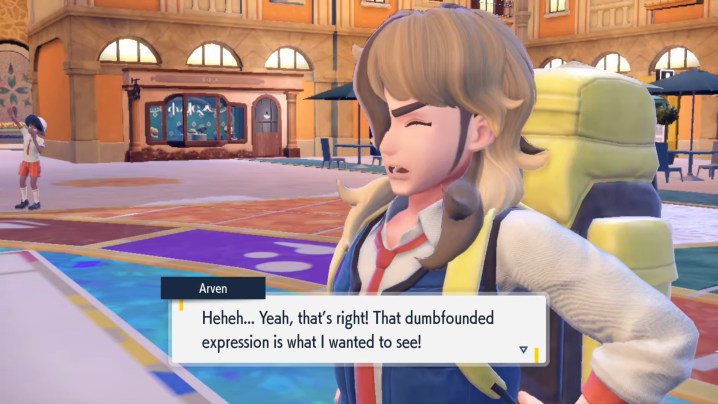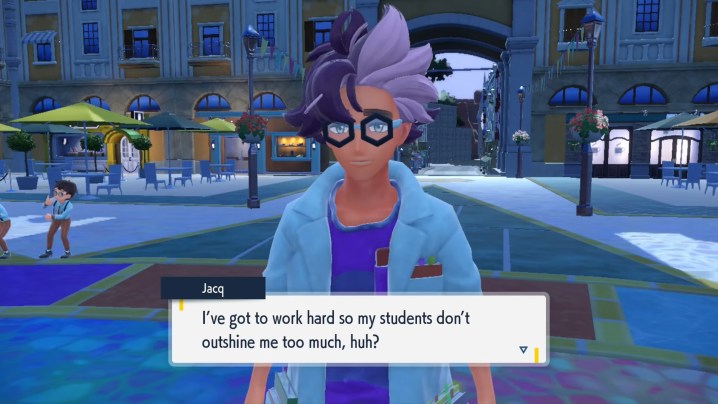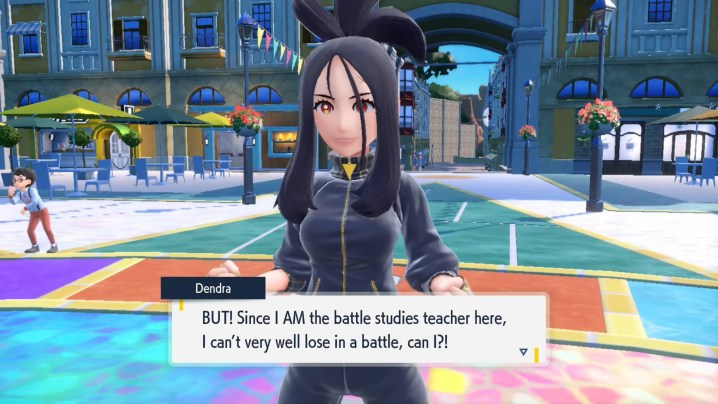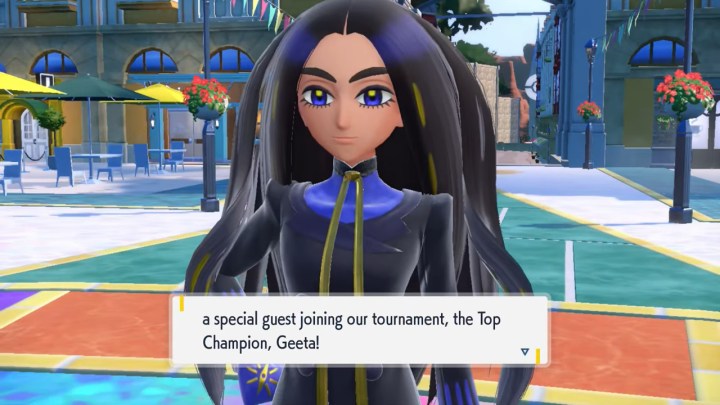Pokémon titles have always provided extra content for players to challenge themselves with after completing the main quest. Pokémon Scarlet and Violet not only has a far more expansive series of main quests but tons more to do even after beating all three of them. Aside from hunting down legendary Pokémon or rematching all the gym leaders, one of the toughest post-game activities that will open up is the Academy Ace Tournament.
Unlike gym leaders, or most other trainers you will fight around Paldea, the competition you will go up against in the Academy Ace Tournament typically won’t build their teams around a single Pokémon type. Their teams are all very high-level and diverse, making them quite the challenge to overcome. Here’s all the information you need to train your team to become the Academy Ace Tournament champion in Pokémon Scarlet and Violet.
See more
- Pokémon Scarlet and Violet: shiny hunting guide
- Pokémon Scarlet and Violet gym leader guide: best order, leveling, and team tips
- Pokémon Scarlet and Violet: how to beat the Elite Four
How to start the Academy Ace Tournament

The Academy Ace Tournament is a post-game activity. To unlock it, you will first need to beat the Victory Road quest by earning all eight gym badges and beating the Elite Four. Once done, you then also need to rematch and beat all eight gym leaders at least one time.
Once you’ve done all that, head back to the Academy and approach the attendant at the Entrance Hall desk. They will let you begin the Academy Ace Tournament.
Note that you will be fully healed between each round of the tournament, so feel free to Terastallize against every opponent.
Academy Ace Tournament guide
You are able to repeat the Academy Ace Tournament multiple times. On your first attempt, you will always face the same four trainers, but on subsequent attempts, you will get a random assortment of trainers. Here’s what your first time through the brackets will look like.
Arven

Arven is your first opponent in the tournament, and his team shouldn’t surprise you much. The main difference now is that all his Pokémon are far stronger than before. Here’s what you’ll be up against in round one:
- Greedent — Level 67 (Normal-type)
- Garganacl — Level 67 (Rock-type)
- Scovillain — Level 67 (Grass/Fire-type)
- Toedscruel — Level 67 (Ground/Grass-type)
- Cloyster — Level 67 (Water/Ice-type)
- Mabosstiff — Level 68 (Dark-type with Dark Terra Type)
Arven’s team has a focus on causing damage over time (DoT) effects on your Pokémon with various status ailments, so you will want to one-shot as many of them as possible. This means building your team and switching out your Pokémon between each of his members. Most of his team is weak to Fighting-types, which is perfect to start with to counter Greedent. Swap out for an Ice Pokémon when you get to his Toedscruel, Rock for Cloyster and Scovillain, and then back to fighting to clean up his Mabosstiff.
Jacq

Despite coming second, Jacq is arguably an easier opponent than Arven. This is because all but two of his Pokémon are single-type with easy-to-exploit counters, but also because his team is slightly lower level. Here’s what you can expect:
- Arcanine — Level 65 (Fire-type)
- Mudsdale — Level 65 (Ground-type)
- Lurantis — Level 65 (Grass-type)
- Slowbro — Level 65 (Water/Psychic-type)
- Swalot — Level 65 (Poison-type)
- Farigiraf — Level 66 (Normal/Psychic-type with Psychic Terra Type)
Most of Jacq’s team will have very obvious counters. Such as Water against his Fire, Grass against Ground, and Fire against Grass. Even his Slowbro is easily overwhelmed with a good Electric, Grass, Bug, Ghost, or even Dark-type, though you can get double value out of Dark and Bug-types here since they also counter his Farigiraf.
Dendra

Despite being the Academy battle professor, Dendra is an underwhelming opponent in the Academy Ace Tournament. Her team is equal level to Jacq’s, but can essentially be swept by just one or two types. Looking at what Pokémon she’s bringing out, we can easily counter her attacks:
- Falinks — Level 65 (Fighting-type)
- Taurus — Level 65 (Fighting/Fire-type
- Taurus — Level 65 (Fighting/Water-type)
- Hawlucha — Level 65 (Fighting/Flying-type)
- Medicham — Level 65 (Fighting/Psychic-type)
- Hariyama — Level 66 (Fighting-type with Fighting Terra Type)
As you can see, every single Pokémon on Dendra’s roster is at least part Fighting type, which is weak to Fairy, Flying, and Psychic types. Flying and Psychic do best against most of her team, though the only caveat is that Medicham won’t take super-effective damage from Psychic moves since it is part Psychic itself. Other than that, the only tricky thing to watch out for is her Hawlucha’s speed, but you can get around that with a powerful Flying-type.
Geeta

While the rounds only seemed to get easier up to this point, Geeta is here to provide a true final challenge for the tournament. She hasn’t altered her team at all since you faced her after beating the Elite Four so you will know exactly what to expect, only now they’re at a slightly higher level. Here’s a refresher on her team:
- Espathra — Level 69 (Psychic-type)
- Avalugg — Level 69 (Ice-type)
- Kingambit — Level 69 (Dark/Steel-type)
- Veluza — Level 69 (Water/Psychic-type)
- Gogoat — Level 69 (Grass-type)
- Glimmora — Level 70 (Rock/Poison-type with Rock Terra Type)
The main types you want to bring along here are Fire and Bug. If you have a Pokémon with moves from both those types you can use it to counter every Pokémon on Geeta’s team with the exception of her Glimmora, which will be resistant to those two types. Thankfully, that last Pokémon has plenty of weaknesses you can choose from, including Fighting, Grass, Ground, Steel, and Water.
Academy Ace Tournament Rewards
Aside from XP and cash, your reward for beating the Academy Ace Tournament for the first time will be the Sporty Cap accessory and the Paldea Champion Ribbon.
Every time you repeat the tournament, you will have a set percentage chance of getting various items as rewards, such as Rare Candy, a random Mint, random Tera Shard, with the rarest drop being a Gold Bottle Cap at just 1%.
Editors' Recommendations
- The best Pokémon Scarlet and Violet mods
- Pokémon Legends: Z-A: release date window, trailer, gameplay, and more
- Everything announced at February’s Pokémon Presents stream
- Like a Dragon: Infinite Wealth gift guide: best gifts for every character
- All Legendary Pokémon locations in Scarlet and Violet: The Indigo Disk




